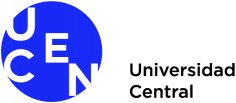
Dr. Marianela Saldías Pérez tells us about the contributions of her research against cancer treatment./ Revisa la columna de la investigadora Dra. Marianela Saldías Pérez.

|
Every October 19th, the world day of the fight against breast cancer is commemorated. This aims to raise awareness and provide information on the early detection of this pathology and updates on palliative treatment and its consequence on patients’ quality of life. According to the GCO (Global Cancer Observatory), in Chile in 2020, 55 breast cancer cases were diagnosed for every 100,000 women, with 17.3 dying per 100,000. These alarming figures are added to the increase in cases in premenopausal women and the fact that 9 out of 10 cases are associated with external or environmental factors as opposed to hereditary ones. This reality encourages and focuses research in this field on the study of potential drugs that are competitive with already regulated products but with fewer associated side effects. Refinement of drugs in cancer therapy focuses on understanding the mechanism of action and identifying critical biological "promoters" that induce uncontrolled growth of malignant cells and their inhibition. This implies innovating the molecular architecture of potential drugs to "tune" their affinity with these biological "promoters" of cancer. This way, Bioinorganic Chemistry is in good health, applying synthetic strategies for elaborating new molecules, modulating their structure, inserting organic or inorganic bioactive fragments, and studying the effect of these modifications on their activity. Among these new compounds, "metallopharmaceuticals" are created. The latter are compounds that arise from the union of one or more organic molecules with a metal, which can have anticancer activity. In 1978, cisplatin [Pt(NH3)2Cl2] emerged as the first metallopharmaceutical approved by the FDA (Food and Drugs Administration) for chemotherapy against different lines of cancer. Although it showed efficacy in the antitumor response, subsequent studies demonstrated toxic effects after its use. With this, the interest and boom in the development of Bioinorganic Chemistry in similar compounds have generated more specific and less toxic platinum derivatives, such as carboplatin or oxaliplatin, and opened the way to research for other metals. In this way, the metals that are part of our body, such as Fe, Cu, and Zn, are postulated as candidates to form metallopharmaceuticals that could be more easily metabolized and reduce side effects. But then, what do we do at the Central University about it? The Research and Postgraduate Studies Institute of the Faculty of Health Sciences of the UCEN houses the Medical and Bioinorganic Chemistry research group (QMEDBIN) that develops, among its lines of research, Bioinorganic Chemistry, whose studies aim to create a potential metallopharmaceutical. This includes the design and modulation of the physicochemical properties of copper and zinc compounds to promote their interaction with the genetic material that would inhibit the uncontrolled growth of malignant cells. By being incorporated into nanocapsules of biocompatible material, these compounds are expected to improve their bioavailability. However, more research and verification need to be done to contribute to a remedy for this disease that affects many women and their families.
|
Cada 19 de octubre se conmemora el día mundial de la lucha contra el cáncer de mama, que pretende sensibilizar y entregar información sobre la detección temprana de esta patología, así como las actualizaciones en el tratamiento paliativo y su consecuencia en la calidad de vida de los pacientes. Según datos obtenidos por la GCO (Global Cancer Observatory), en Chile durante el 2020 se diagnosticaron 55 casos de cáncer de mama por cada 100 mil mujeres, falleciendo 17,3 por cada 100 mil. Estas cifras alarmantes se suman al aumento de casos en mujeres premenopáusicas y que, 9 de cada 10 casos se asocian a factores externos o ambientales frente a los hereditarios. Esta realidad incentiva y enfoca la investigación en este campo para el estudio de potenciales fármacos competitivos con los productos ya regulados, pero con menores efectos colaterales asociados. El perfeccionamiento de los fármacos en la terapia contra el cáncer se enfoca en la compresión del mecanismo de acción, intentando identificar “promotores” biológicos claves que induzcan el crecimiento descontrolado de células malignas y su inhibición. Esto implica innovar en la arquitectura molecular de los potenciales fármacos para “sintonizar” su afinidad con estos “promotores” biológicos del cáncer. En este sentido, la Química Bioinorgánica goza de buena salud, aplicando estrategias sintéticas para la elaboración de nuevas moléculas, modulando su estructura, insertando fragmentos orgánicos o inorgánicos bioactivos y estudiando el efecto de estas modificaciones en su actividad. Entre estos nuevos compuestos, nacen los “metalofármacos”. Estos últimos son compuestos que surgen de la unión de una o varias moléculas orgánicas con un metal, que pueden presentar actividad anticancerígena. Desde 1978, el cisplatino [Pt(NH3)2Cl2] surge como el primer el metalofármaco aprobado por la FDA (Food and Drugs Administration) para la quimioterapia contra distintas líneas de cáncer. Aunque mostró eficacia en la respuesta antitumoral, estudios posteriores demostraron los efectos tóxicos tras su uso. Con ello, el interés y el auge en el desarrollo de la Química Bioinorgánica en compuestos similares ha generado derivados del platino más específicos y menos tóxicos, como el carboplatino o el oxalilplatino, y abrió camino a la investigación para otros metales. De esta manera, los metales que forman parte de nuestro organismo como el Fe, Cu, Zn, se postulan como candidatos para conformar metalofármacos que podrían metabolizarse más fácilmente pudiendo disminuir los efectos secundarios. Pero, qué hacemos en la Universidad Central al respecto? El Instituto de Investigación y Posgrado de la Facultad de Ciencias de la Salud de la UCEN, alberga al grupo de investigación de Química Médica y Bioinorgánica (QMEDBIN) el cual desarrolla entre sus líneas de investigación, la Química Bioinorgánica, cuyos estudios tienen como objetivo la creación de un potencial metalofármaco, éste comprende el diseño y modulación de propiedades fisicoquímicas de compuestos de cobre y zinc para promover su interacción con el material genético que permita la inhibición del crecimiento descontrolado de células malignas. Se espera que estos compuestos mejoren su biodisponibilidad al incorporarlos dentro de nanocápsulas de material biocompatible, sin embargo, aún queda por investigar y comprobar para contribuir desde la ciencia a remediar una enfermedad que atañe a muchas mujeres y, en efecto, a sus familias.
|